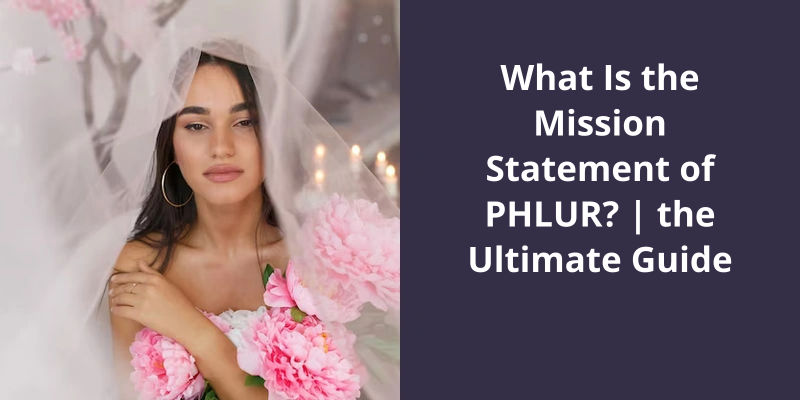Calvin Klein has long been synonymous with a sense of style and sophistication that’s both bold and understated. Their fragrances have consistently pushed boundaries, combining rich and complex scent profiles with a modern edge that speaks to the tastes of today's discerning consumers. One of their more recent additions to their fragrance line-up is Calvin Klein Intense Power, a scent that’s all about boldness and intensity. This fragrance is designed for men who’re unapologetically confident and never shy away from taking risks. Whether worn for a night out on the town or simply as a daily signature scent, this fragrance is a must-have for any man who wants to exude a sense of power and confidence that’s undeniably sexy.

Is Calvin Klein Considered Designer?
Calvin Klein is a name that’s become synonymous with high-end fashion and luxury. The man behind the brand, Calvin Richard Klein, was born in 1942 in the Bronx, New York. From a young age, Klein showed a keen interest in fashion, and he went on to study at the Fashion Institute of Technology.
After graduating, Klein started his own company with his childhood friend, Barry Schwartz. The company initially focused on creating womens coats, but quickly grew to encompass a wide range of clothing, accessories, and fragrances. Today, Calvin Klein Inc. is a global brand with a presence in over 100 countries.
Despite it’s success, there’s been some debate over whether or not Calvin Klein can be considered a true “designer” in the traditional sense of the word. Some argue that his designs are too simplistic and lack the intricate details that are often associated with high fashion.
However, others contend that Kleins minimalist aesthetic is precisely what’s made him such a trailblazer in the fashion industry. His designs have been praised for their clean lines, understated elegance, and timeless appeal.
The Influence of Calvin Klein on Modern Fashion Trends
- Calvin Klein is one of the most influential designers in modern fashion trends.
- His minimalist designs and iconic branding have had a significant impact on the industry.
- Klein was known for his use of clean lines, neutral colors, and high-quality materials.
- He helped popularize the “underwear as outerwear” trend and introduced controversial advertising campaigns featuring provocative imagery.
- Klein’s impact can still be seen today in the continued popularity of minimalistic fashion styles and designer logos.
Calvin Klein is a brand that’s been around for decades, and one of the reasons for it’s longevity is it’s ability to appeal to a wide range of customers. Whether you’re a young adult looking for stylish denim or a professional seeking high-end fashion, Calvin Klein has something for you. But who, exactly, is the brand’s target audience? Let’s take a closer look.
Who Is Calvin Klein’s Audience?
Calvin Klein is undoubtedly one of the most iconic fashion brands in the world, known for it’s minimalist designs that are both timeless and contemporary. However, the question of who exactly Calvin Kleins audience is can often be a complex one. Perhaps the best way to answer it’s by looking at the brands different clothing lines and their target customers.
One of the most popular Calvin Klein collections is it’s underwear line. Known for it’s seductive, minimalist designs, this range is aimed at young adults, particularly those in their early twenties who value comfort, style, and quality. The brands use of edgy ad campaigns featuring celebrities like Kendall Jenner and Justin Bieber has helped to consolidate it’s appeal to this demographic.
In contrast, Calvin Kleins high-end fashion collections are geared towards a more sophisticated audience. These collections feature elegant, minimalist designs that are perfect for fashion-conscious adults of all ages. The brands emphasis on quality materials and expert craftsmanship has appealed to discerning customers who’re willing to invest in fashion pieces that will stand the test of time.
While some brands might focus exclusively on one category of clothing, such as sportswear or high fashion, Calvin Klein stands out for it’s ability to cater to different needs and tastes. From it’s classic denim collections to it’s chic evening wear, the brand offers something for everyone.
Another important aspect of Calvin Kleins audience is it’s global reach. With a presence in more than 100 countries, the brand has managed to appeal to a vast range of customers from different backgrounds and cultures. This global appeal has been further consolidated by the brands collaborations with international designers and celebrities, helping to keep it’s designs fresh and exciting.
How Calvin Klein’s Marketing and Advertising Strategies Have Contributed to It’s Audience Appeal.
Calvin Klein has a history of utilizing provocative and controversial advertising campaigns to capture the attention of their audience. These strategies have helped the brand establish itself as an edgy and daring fashion company, appealing to those who seek bold and unconventional styles. Additionally, Calvin Klein has leveraged the power of celebrity endorsements and collaborations to further enhance their appeal and connect with their target demographics. Overall, the brand’s marketing and advertising efforts have played a significant role in shaping it’s audience appeal and attracting a loyal customer base.
During the 1980s, Calvin Klein reached the peak of his popularity as the designer-jeans craze was at it’s highest. His innovative designs and successful marketing strategies, such as introducing a women’s boxer shorts line and a men’s underwear collection, helped his brand become a household name in fashion.
When Was Calvin Klein Most Popular?
Calvin Kleins rise to popularity began in the 1980s, when the designer was at the forefront of the designer-jeans frenzy. During this time, Calvin Kleins signature brand of chic minimalism was embraced by the fashion world, and the designer quickly became synonymous with high-end denim. With a focus on sleek tailoring, clean lines, and understated sophistication, Calvin Kleins designs appealed to a wide range of consumers.
One of the most iconic moments in Calvin Kleins popularity came with the release of the infamous “Calvin Klein Underwear” campaign, which featured a young Brooke Shields posing in a pair of tighty whities and declaring that “nothing comes between me and my Calvins”. The campaign was met with both controversy and acclaim, cementing Calvin Kleins reputation as a boundary-pushing designer whose provocative style was both daring and innovative.
Throughout the 1980s, Calvin Klein continued to expand his brand, launching successful lines of fragrances, eyewear, and accessories. His minimalist aesthetic continued to resonate with consumers, and he became one of the most sought-after designers of the decade. His innovative use of denim, which included everything from acid-washed jeans to slick black leather pants, helped to define the eras distinctive style.
Despite facing some controversy over the years, including accusations of using overtly sexual imagery in his campaigns and designs, Calvin Klein remained one of the most popular and influential designers of the 1980s. His innovative approach to fashion and his ability to push boundaries and challenge conventions earned him a dedicated following among fashion-forward consumers, cementing his position as one of the most important names in modern fashion history.
Today, Calvin Kleins legacy is alive and well, with the brand remaining a top choice for consumers who value clean, minimalist designs and high-quality materials. Although the designer himself has since retired, his influence on the fashion world can still be seen in everything from the latest runway collections to street style looks.
How Did Calvin Klein’s Minimalist Aesthetic Influence Fashion in the 1980s and Beyond?
In the 1980s, Calvin Klein introduced a minimalist aesthetic to fashion, which emphasized simplicity and clean lines. This approach had a big impact on the fashion industry, leading to a trend of minimalism and casual wear. Calvin Klein’s influence can still be seen today in modern fashion design.
Calvin Klein has been a longstanding fashion brand for decades. Their target audience has always been centered around the younger generation. While they primarily cater to individuals between the ages of 15 and 40, others with higher incomes have also shown interest in purchasing their high-end clothing and fashion products. Let’s explore further what’s made Calvin Klein such a successful brand amongst it’s target demographic.
What Age Group Does Calvin Klein Target?
Calvin Klein is a brand that’s synonymous with high-end fashion and luxury. Since it’s inception in the 1960s, the brand has been constantly evolving to cater to the ever-changing fashion trends and preferences of it’s target audience.
The brand is particularly popular among men and women between the ages of 15 and 40, who’re looking to make a fashion statement with their clothing choices. Calvin Kleins target audience is typically fashion-conscious individuals who’re looking for quality, style, and sophistication in their clothing choices.
The brand is popular with young people who’re passionate about fashion, music, and pop culture. The brands advertising campaigns are often centered around these themes, making it easier for younger audiences to connect with the brand.
What Is the History of Calvin Klein as a Brand?
Calvin Klein is a fashion brand founded in 1968 by designer Calvin Klein. The brand rose to fame in the 1980s with it’s iconic underwear and denim campaigns featuring celebrities. Throughout the years, the brand has continued to produce successful clothing lines for men and women, as well as fragrances, accessories, and home goods. In 2003, the brand was sold to PVH Corp. and remains a prominent name in the fashion industry today.
The fashion industry is constantly evolving and adapting to new trends, but one thing that remains constant is the importance of brand appeal among consumers. With luxury goods becoming increasingly accessible to the average shopper, it’s interesting to see how the habits of wealthy individuals have changed when it comes to high-end fashion purchases. And as it turns out, Calvin Klein seems to be a top choice among the elite.
Do Rich People Wear Calvin Klein?
The study found that 33 percent of high-earning men spent money on Calvin Klein clothing, followed by Ralph Lauren at 31 percent and Brooks Brothers at 23 percent. Other popular luxury brands included Hugo Boss, John Varvatos and Armani.
Whats interesting about this data is that it shows what rich people actually buy, rather than what we assume they buy. While there are plenty of high-end brands out there that are certainly popular with the wealthy, the fact that Calvin Klein came out on top of this survey is notable.
Of course, there are plenty of reasons why someone might choose Calvin Klein over other luxury brands. It could simply come down to personal taste, or it could be a matter of convenience – maybe theres a Calvin Klein store closer to the persons home or office than a competitors location.
But whatever the reason, it’s clear that Calvin Klein is resonating with high-earning men. And that makes a certain amount of sense; after all, the brand is known for it’s sleek, minimalist designs, which could easily appeal to someone who values simplicity and refinement.
At the same time, though, it’s worth noting that just because rich people are buying Calvin Klein doesn’t mean that the brand is universally loved. There are certainly people out there who find the brands aesthetic to be boring or overrated.
So while this study does give us some insight into the fashion preferences of the rich, it’s important to remember that these preferences are far from absolute. However, it’s still interesting to see which brands are currently resonating with high-earning consumers, as it can give us some insight into broader trends in the fashion industry.
What Factors Drive Purchasing Decisions Among the Wealthy When It Comes to Fashion?
- Brand reputation and prestige
- Quality of materials and craftsmanship
- Exclusivity and limited edition pieces
- Customization and personalization options
- Influence of celebrity endorsements and fashion influencers
- Fashion trends and style preferences
- Sustainability and ethical production practices
- Price and perceived value for money
Conclusion
It’s a scent that exudes confidence and masculinity, perfect for the modern man who’s unapologetically bold and daring. It’s combination of oriental and woody notes makes it a timeless classic that will never go out of style. And for those who want to make a statement and stand out from the crowd, this fragrance is a must-have.





